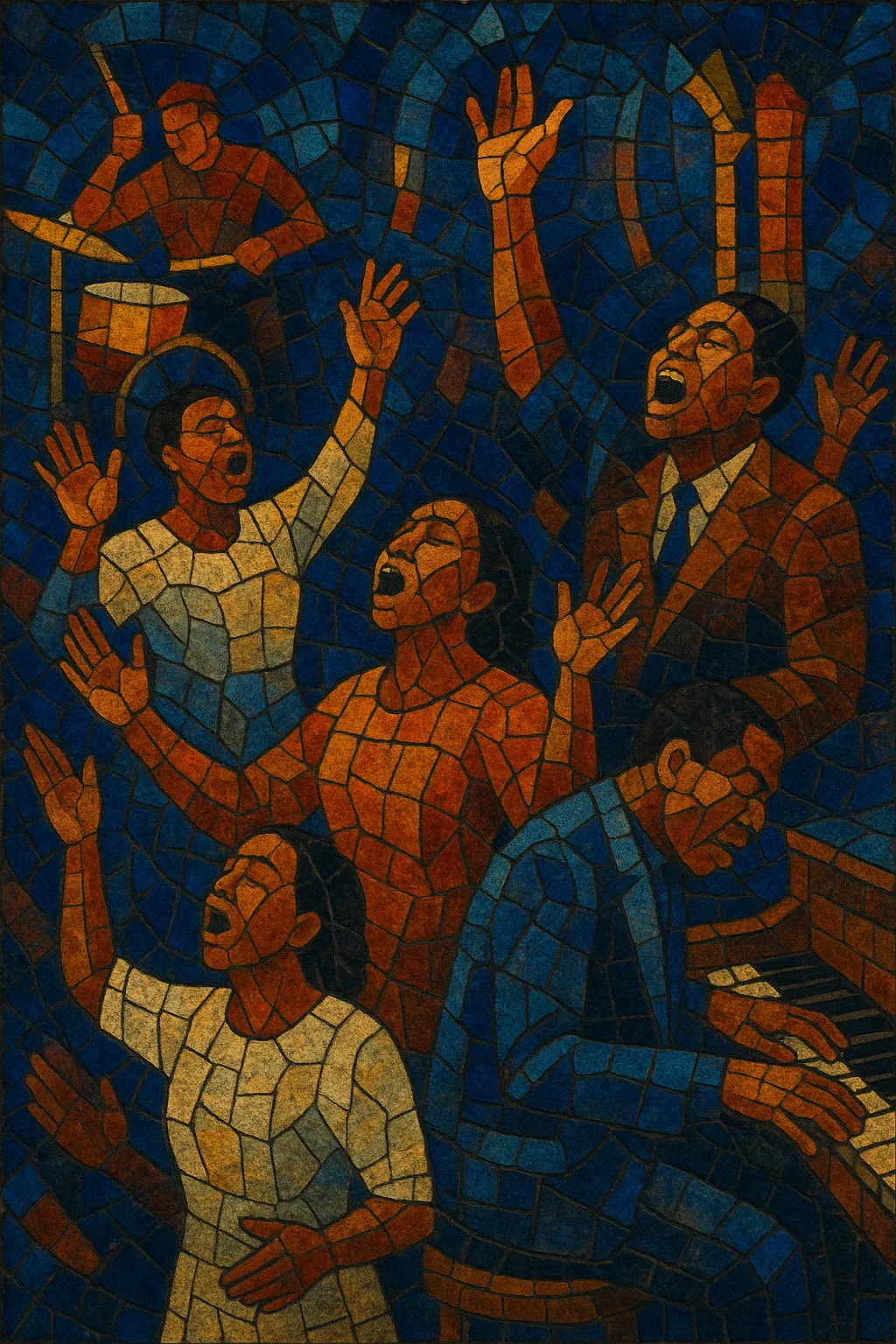
Praise break is a high-energy, improvisatory section of Black church worship in which the band, choir, and congregation erupt into a fast "shout" groove. It typically happens after a song’s vamp or following a sermon cue, accelerating into a driving 4/4 pattern that invites dancing, call-and-response, and spontaneous praise.
Musically, praise breaks lean on a brisk, swung backbeat (often around 150–180 BPM), emphatic drum "shout" patterns, Hammond organ swells, piano runs, tight bass ostinatos, and punchy ensemble hits. Harmonies cycle through church-friendly progressions, modulations, and walk-ups while the worship leader and choir trade short, repeated calls. The feel is celebratory, communal, and cathartic—meant to sustain motion and heighten spiritual intensity.
Praise break practice draws on the ring shout (3694) and Holiness/Pentecostal worship traditions, where rhythmic clapping, dancing, and call-and-response were central. As Black gospel (2917) and traditional black gospel (4004) matured, church bands embraced the Hammond organ and drum set, forming the sonic foundation of contemporary "shout" music.
The mass-choir era and contemporary gospel (2525) leaders standardized the fast, churchy vamp-to-shout transition in live services. Drummers developed characteristic shout beats, keyboardists codified organ/piano runs and hit cues, and choirs perfected short, repeatable calls to sustain energy. By the 1990s, the term "praise break" was commonly used to describe these climactic, extended sections.
Smartphones and social media amplified praise breaks through viral clips, exposing wider audiences to the style’s intensity and musicianship. Music directors and rhythm sections became minor celebrities for inventive breaks, complex hits, and rapid modulations. The sound fed back into urban contemporary gospel (4064), gospel R&B (12085), and pop worship (12141), influencing arrangements that incorporate shout-ready vamps and live-feel dynamics.
Beyond technique, praise breaks function as communal catharsis—moments where music, movement, and testimony converge. They affirm the Black church’s continuity of embodied worship practice, linking historic shout traditions to contemporary gospel performance.

